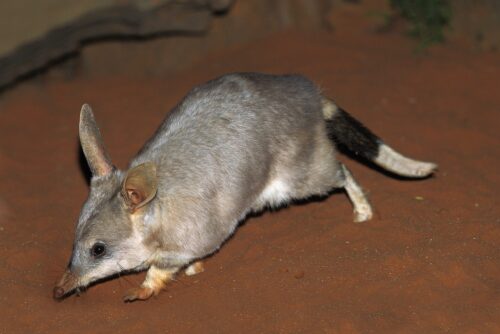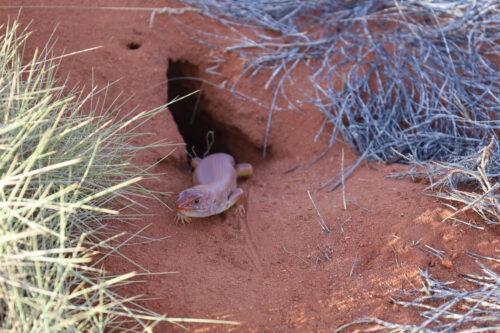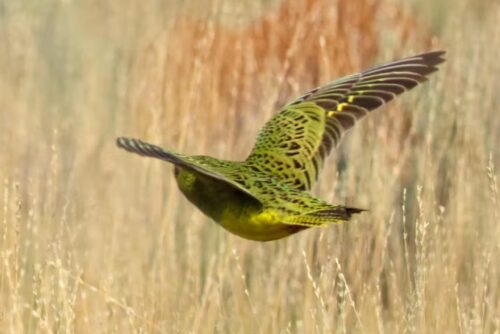Project start date: 18/07/2022
Project end date: 31/12/2026
NESP funding: $1,150,000 (GST-exclusive)
This project is supporting Indigenous rangers in reversing the declining trajectories of 3 priority desert species identified in the Australian Government’s Threatened Species Action Plan 2022–2032 – the bilby, the great desert skink (Tjakura) and night parrot.
Researchers are:
All aspects of the work will use a 2-way science approach that integrates local Indigenous knowledge with the latest technologies to develop efficient, effective and user-friendly monitoring techniques and threat-management programs.
This project builds upon successful projects from the first phase of the National Environmental Science Program (NESP). The Indigenous Desert Alliance (IDA) is leading this project and working with the extensive network of ranger groups across the desert regions.
 |
 |
 |
Photos (left to right): Bilby, Tjakura and night parrot are 3 priority desert threatened species. Credits: Slowtoiongli/Adobe Stock, Kerenza Sunfly and Bruce Greatwich.
Bilby
The bilby is listed as Vulnerable to extinction and has been the subject of many surveys over the past decade. However, until now, there has been little targeted management of wild populations.
This project is establishing long-term monitoring programs that combine traditional tracking with technology such as camera traps, DNA scat analysis and aerial surveys to measure bilby abundance, occupancy and connectivity between sites. It will also provide technical and scientific support to enable ranger groups to progress beyond the survey stage towards initiating experimental fire and predator management programs for the recovery of wild bilby populations.
Tjakura (great desert skink)
Tjakura is nationally classified as Vulnerable. It is preyed upon by feral cats, especially after fire removes vegetation cover. The IDA has worked with ranger groups across the distribution of Tjakura to identify management, monitoring and research priorities for a Tjakura recovery plan.
This project will complement the recovery plan surveys and management actions by developing standardised monitoring for Tjakura across its range and investigating the relationship between fire regimes and population trends. This improved understanding will support rangers to implement best-practice fire management across Tjakura’s range.
Night parrot
The night parrot is a nationally Endangered species known from one area in Queensland and 6 areas of Western Australia (WA).
This project aims to work with Traditional Owners, rangers and the Night Parrot Recovery Team to co-design a research plan for night parrots in WA that builds on research conducted during the previous phase of NESP on the Queensland night parrot population.
The research will prioritise 2-way science techniques to map night-parrot habitat, manage predators, investigate its diet, and document Indigenous knowledge relevant to finding and protecting seed and water resources.
Key research areas
To address the challenges faced by these 3 priority desert threatened species, this project is:
Project leader
The project is being led by Dr Rachel Paltridge from the Indigenous Desert Alliance. This project is collaborating with multiple other hubs and is contributing to 2 cross-cutting initiatives:
Contact
For further information, contact rachelpaltridge@indigenousdesertalliance.com or nesplandscapes@uwa.edu.au.
Research users
People